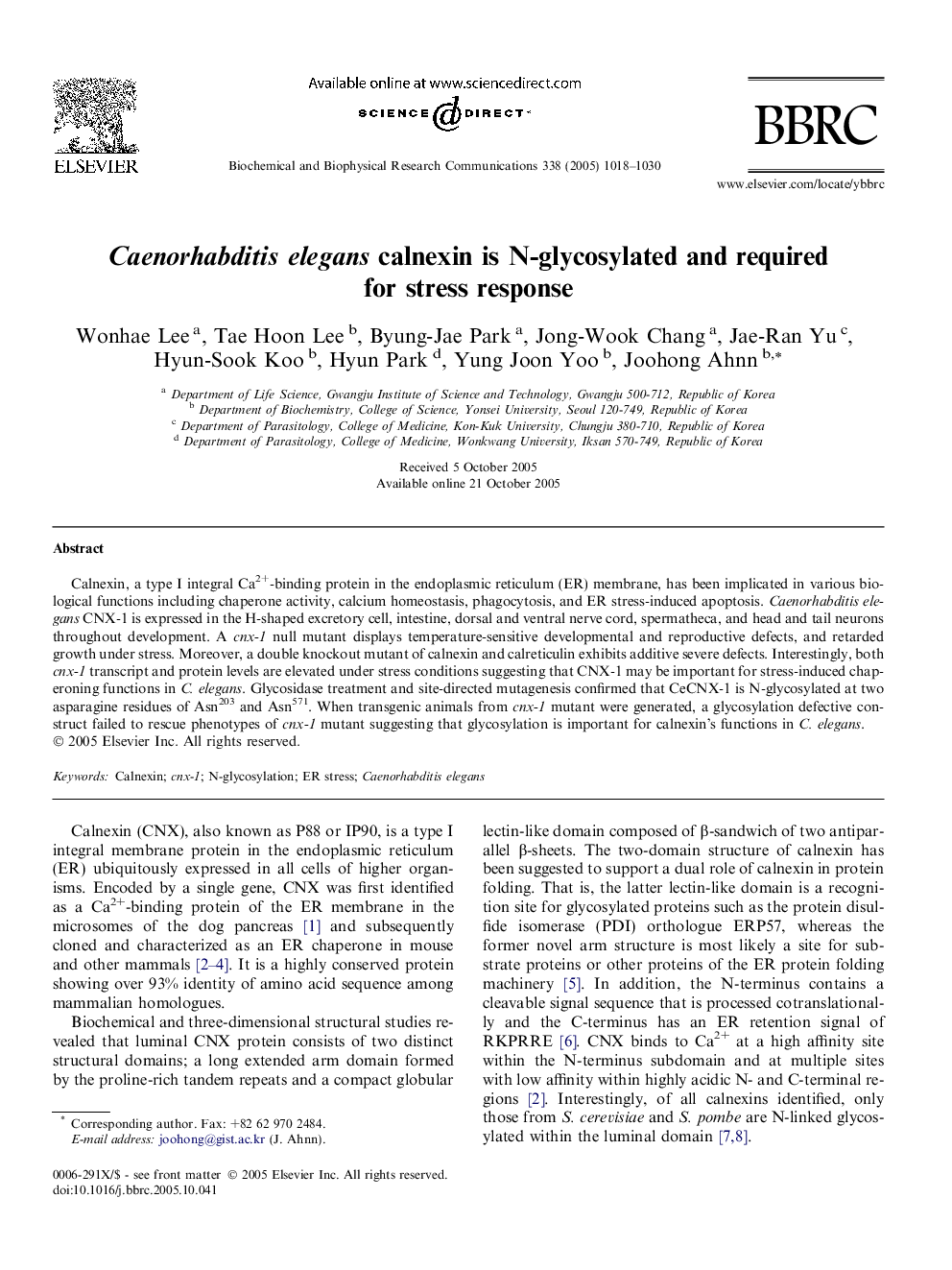| Article ID | Journal | Published Year | Pages | File Type |
|---|---|---|---|---|
| 10767907 | Biochemical and Biophysical Research Communications | 2005 | 13 Pages |
Abstract
Calnexin, a type I integral Ca2+-binding protein in the endoplasmic reticulum (ER) membrane, has been implicated in various biological functions including chaperone activity, calcium homeostasis, phagocytosis, and ER stress-induced apoptosis. Caenorhabditis elegans CNX-1 is expressed in the H-shaped excretory cell, intestine, dorsal and ventral nerve cord, spermatheca, and head and tail neurons throughout development. A cnx-1 null mutant displays temperature-sensitive developmental and reproductive defects, and retarded growth under stress. Moreover, a double knockout mutant of calnexin and calreticulin exhibits additive severe defects. Interestingly, both cnx-1 transcript and protein levels are elevated under stress conditions suggesting that CNX-1 may be important for stress-induced chaperoning functions in C. elegans. Glycosidase treatment and site-directed mutagenesis confirmed that CeCNX-1 is N-glycosylated at two asparagine residues of Asn203 and Asn571. When transgenic animals from cnx-1 mutant were generated, a glycosylation defective construct failed to rescue phenotypes of cnx-1 mutant suggesting that glycosylation is important for calnexin's functions in C. elegans.
Related Topics
Life Sciences
Biochemistry, Genetics and Molecular Biology
Biochemistry
Authors
Wonhae Lee, Tae Hoon Lee, Byung-Jae Park, Jong-Wook Chang, Jae-Ran Yu, Hyun-Sook Koo, Hyun Park, Yung Joon Yoo, Joohong Ahnn,
